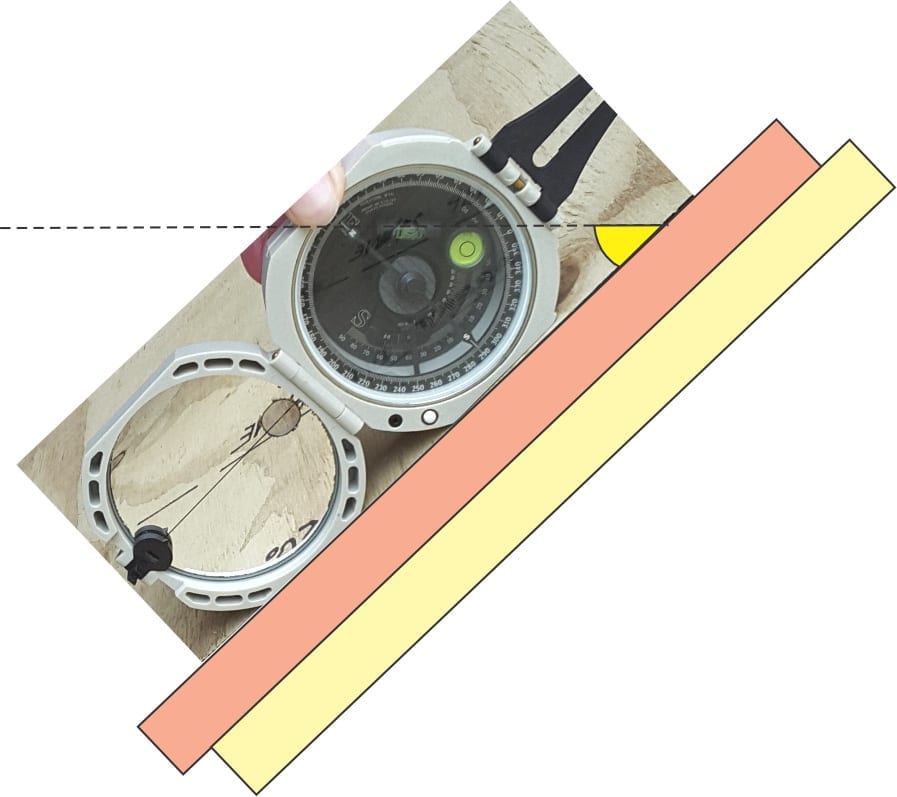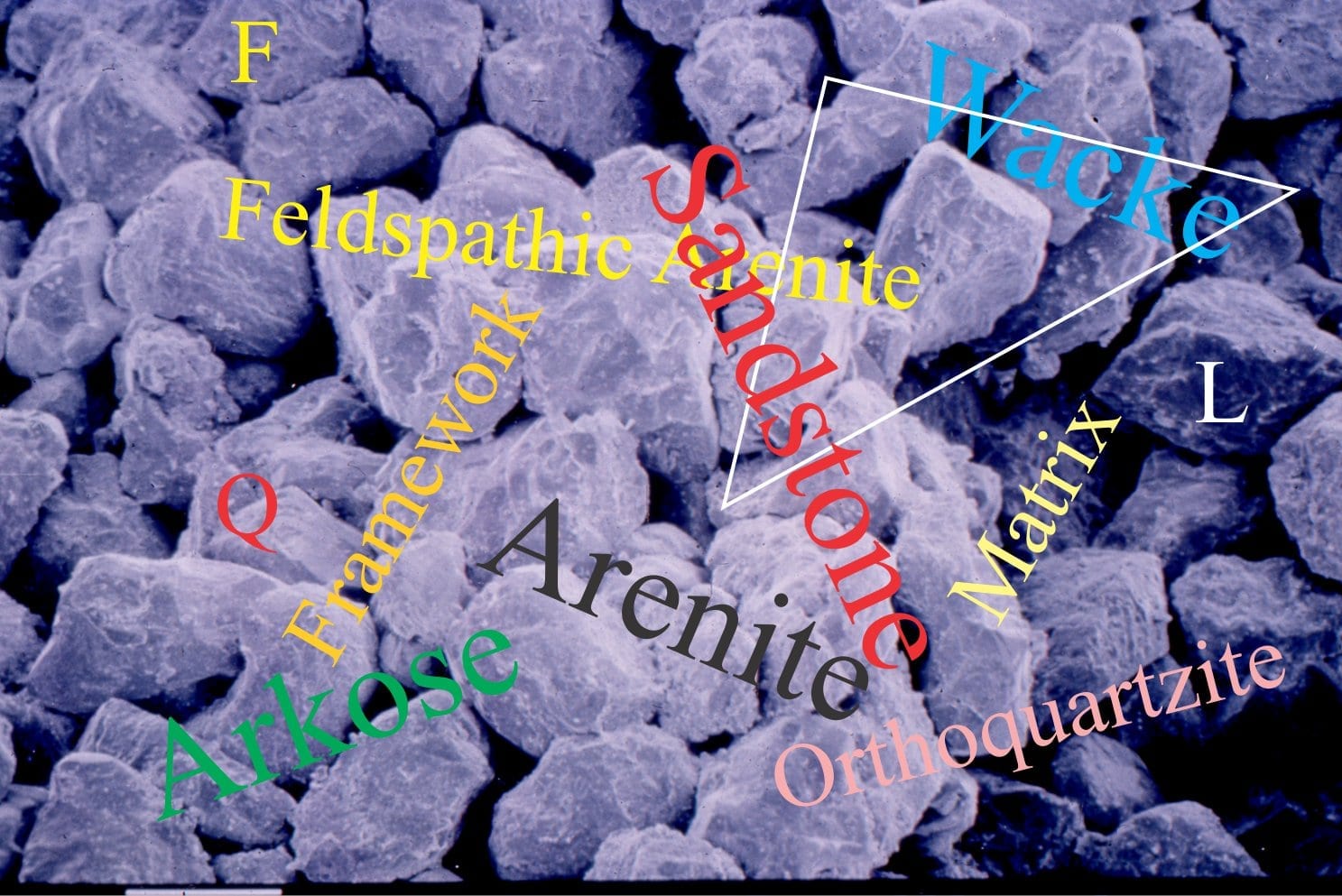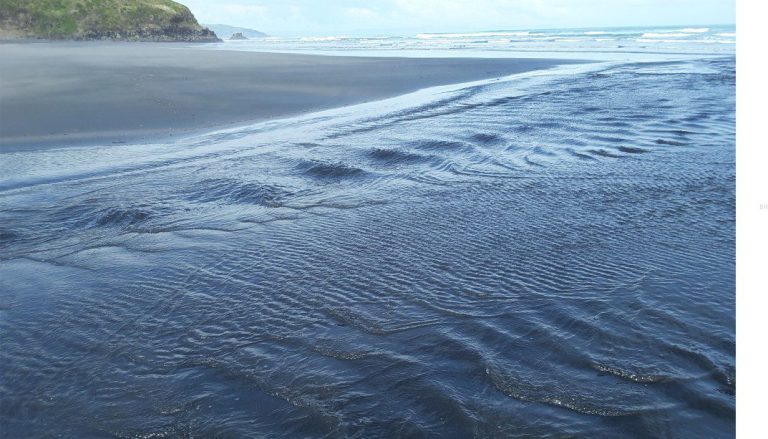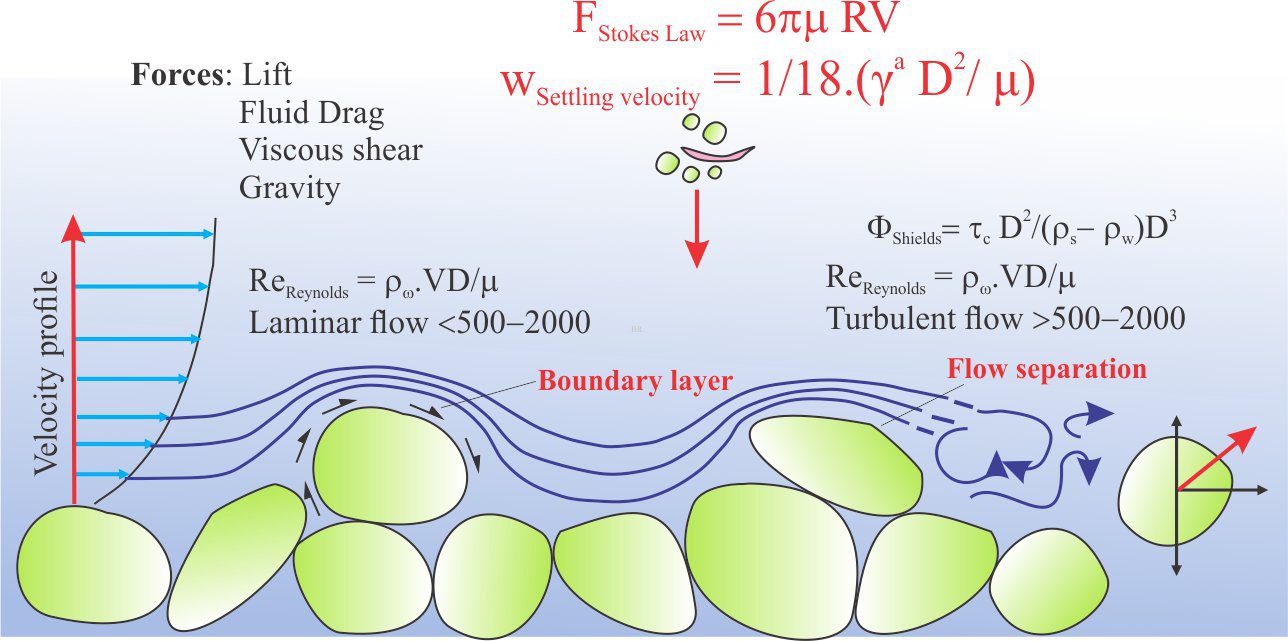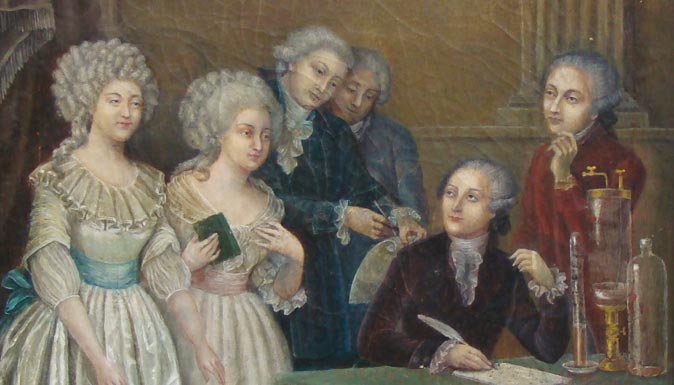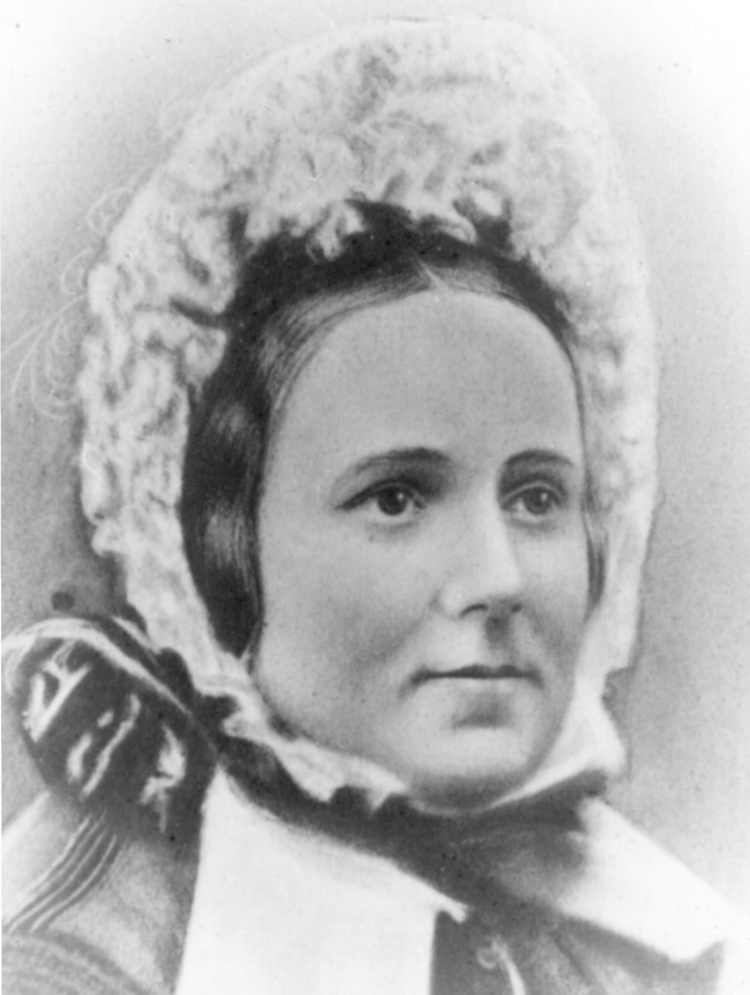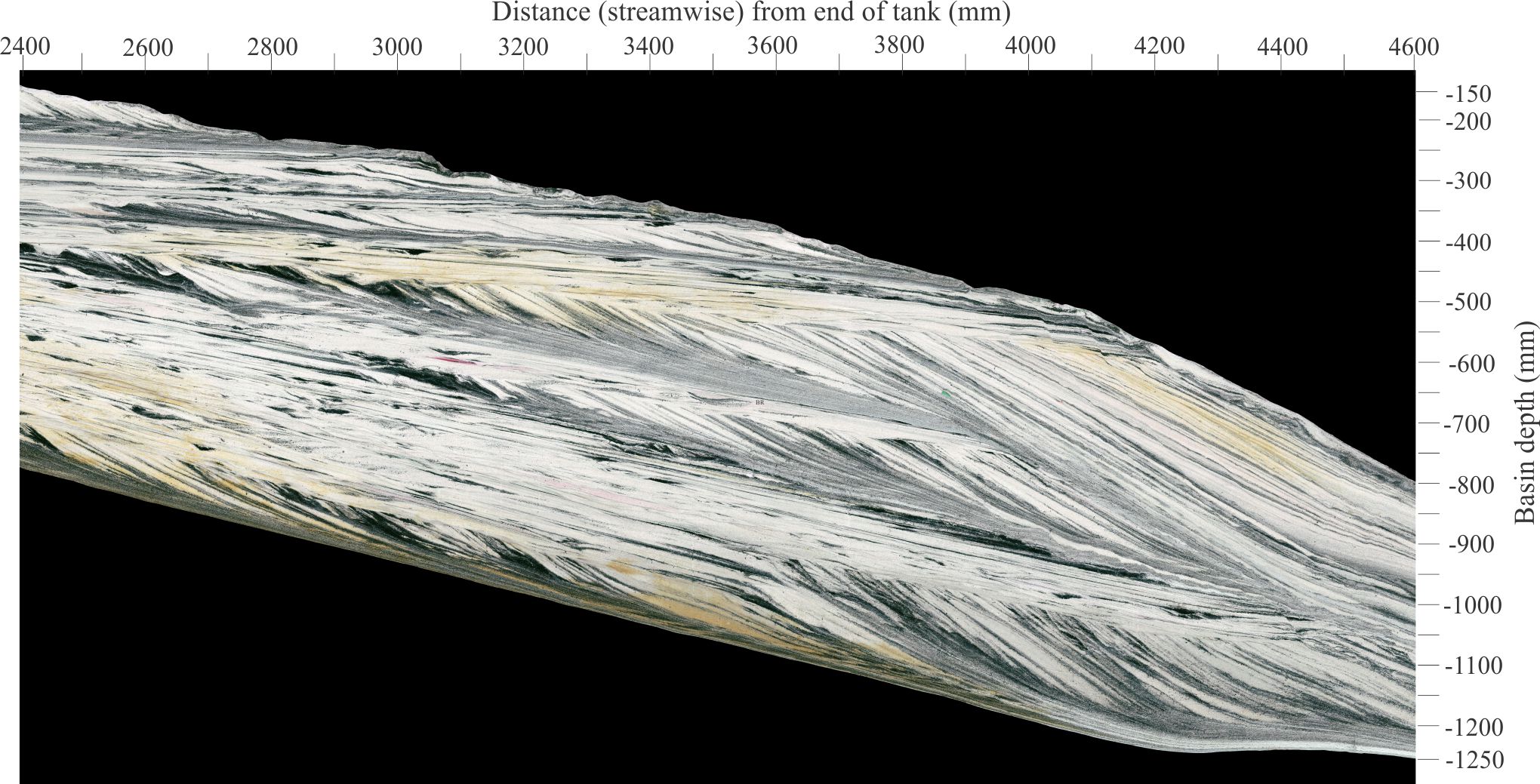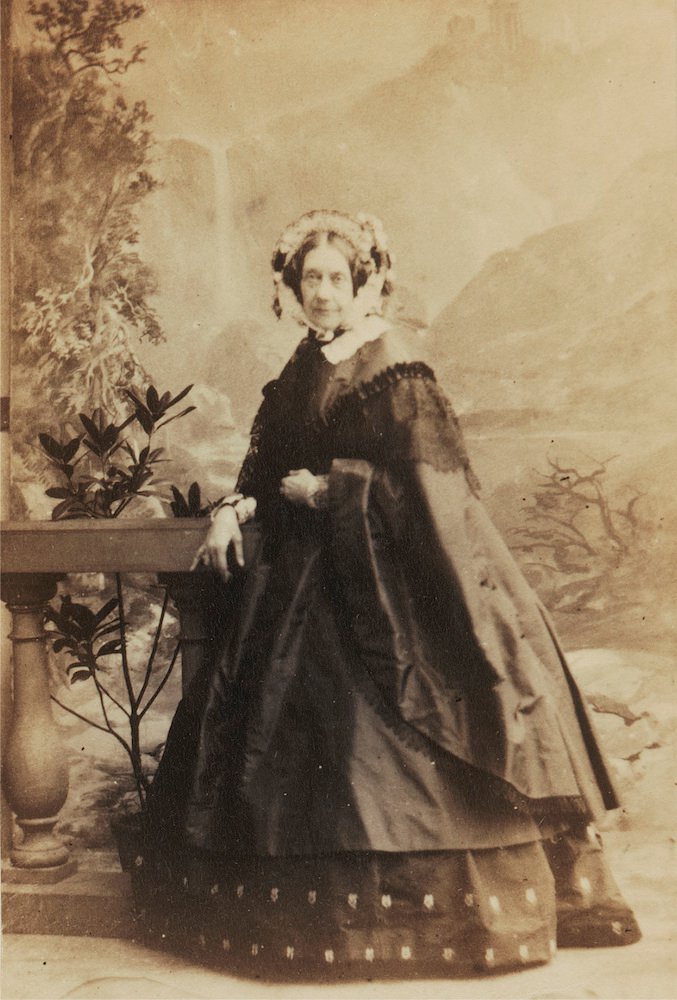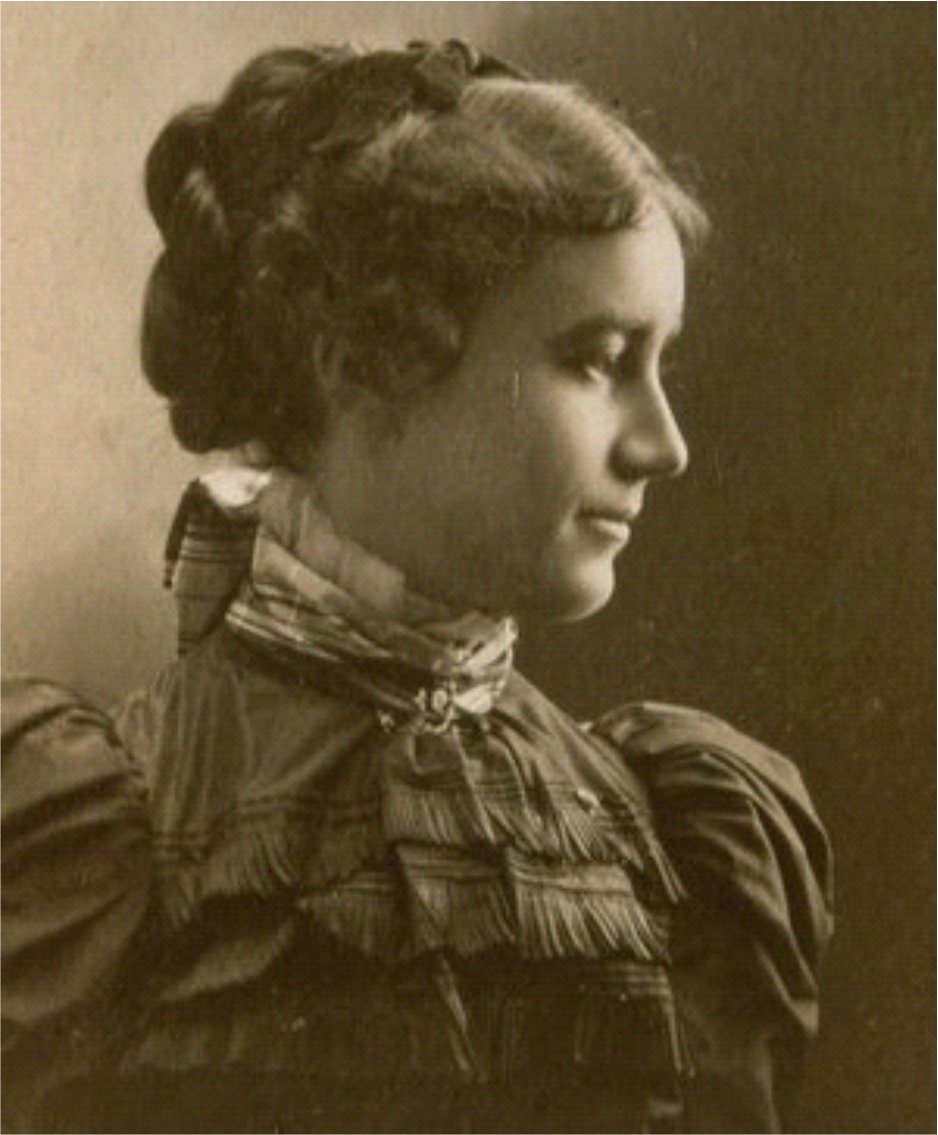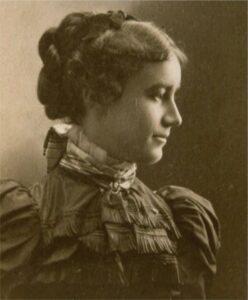
This biography is part of the series Pioneering women in Earth Sciences – the link will take you to the main page.
Carlotta Maury bucked several social norms during her career as a paleontologist: a PhD by1902, field work in southern US, the Caribbean, South Africa, and Western Europe, including organizing her own expedition to the Dominican Republic in 1916. But the role for which she is best remembered is consulting with Royal Dutch Shell Venezuela Division from 1910-1937 – one of the first women to become deeply involved in the oil exploration industry.
The opportunities and administrative infrastructures for women to gain degrees at American colleges in the latter half of the 19th C were more advanced than their counterparts in Britain. But the American position was not without its detractors. Carlotta Maury’s early education is a case in point – not dissimilar to the experience of Florence Basom, Annie Alexander, and Mary Holmes.
Maury’s family life was immersed in science – her father, siblings, uncles, a significant part of which was centred on Harvard University. Women were not permitted to attend the University but they could enroll at The Society for Collegiate Instruction of Women, also known as the Harvard Annex, renamed Radcliffe College in 1894 when it was granted official charter by the Commonwealth of Massachusetts. The College was founded in 1879 – One of its founders was Elizabeth Agassiz, an explorer in her own right. Tuition in the humanities, languages, and natural sciences was provided by those Harvard tutors who agreed to participate – participation by tutors was not compulsory because many thought the project a waste of time.
Like Britain and Western Europe, attitudes against advanced education for women remained firmly entrenched. Harvard’s President Charles Elliot made this comment in an address in 1869 “The world knows next to nothing about the capacities of the female sex. Only after generations of civil freedom and social equality will it be possible to obtain the data necessary for an adequate discussion of woman’s natural tendencies, tastes, and capabilities … it is not the business of the University to decide this mooted point.” (L. Baker, 1976). To press the point he further noted “The difficulties involved in a common residence of hundreds of young men and women of immature character and marriageable age are very grave. The necessary police regulations are exceedingly burdensome “ – a sentiment that echoed British and many European university and society objections to the inclusion of women. Ironically, it was Charles Elliot who presided over the formation of The Annex in 1879. The conferring of degrees to women remained a problem for the University, a formal position stated by the university’s treasurer in 1883 who indicated that “I have no prejudice in the matter of education of women and am quite willing to see Yale or Columbia take any risks they like, but I feel bound to protect Harvard College from what seems to me a risky experiment “. (L. Baker, 1976, op cit).
By the turn of the century Harvard still enforced rigid gender separation (Laurel T. Ulrich, 1999). The granting of degrees by Radcliffe was separate to those at Harvard – women had to wait until 1963 for Harvard itself to accept women’s degrees.
Maury attended the Annex from 1892-1894 but did not gain her first degree there. For that, she had to transfer to Cornell where she gained a BSc in 1896. In 1898 she enrolled in a PhD at Cornell, under the supervision of paleontologist Gilbert Harris, focusing on Oligocene geology of the southern US. Making good use of a Schuyler Scholarship from Cornell, she spent time at Columbia University working with Amadeus Grabau, and subsequently the Sorbonne in Paris where she also undertook field work in European Cenozoic rocks. She gained her PhD in 1902 “A comparison of the Oligocene of Western Europe and southern United States”, using material from various sites in Germany, Belgium, and France. She published the thesis in the Bulletin of American Paleontology.
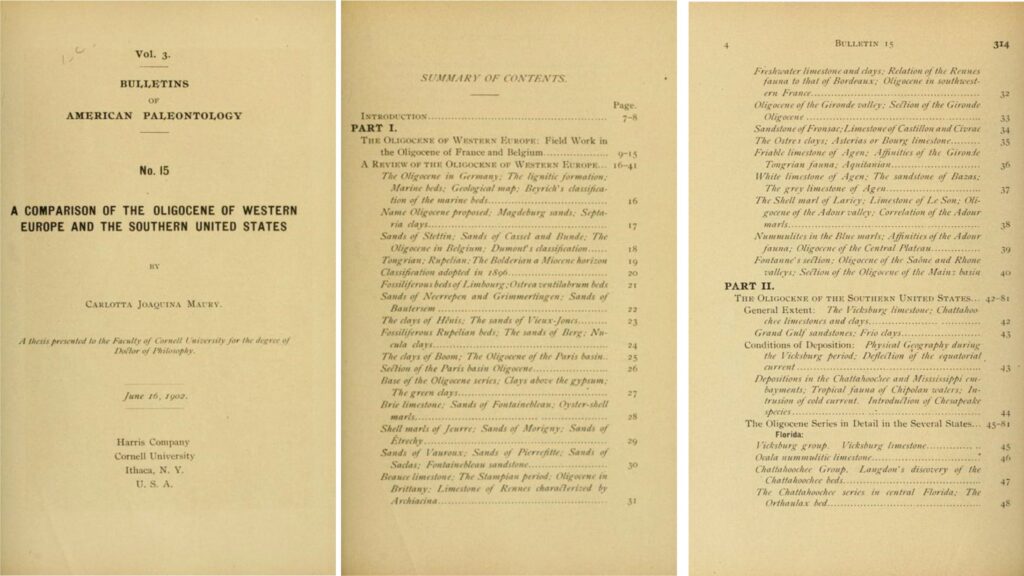
Maury remained in academia for a few years, initially as an assistant to Grabau at Columbia (1904-1906), then as an assistant paleontologist to Harris at the Louisiana Geological Survey (1907-1909) studying microfossils from the coastal Gulf of Mexico – one of the first women to take such a role with US state surveys. There followed a professorship of Geology and Zoology at Huguenot University, South Africa (1912-1915). Her penchant for field work continued with an expedition to Venezuela (1909-1911). In 1916, perhaps encouraged by the award of the Sarah Berliner Fellowship, she organized her own Maury Expedition to the Dominican Republic, – an uncommon feat for any woman at the time, bucking all the social norms. Her detailed analyses of stratigraphy and paleontology were published in two parts in the Bulletin of American Paleontology (1917), and The Journal of Geology (1918). Maury continued to publish paleontological articles on Cenozoic molluscan faunas, microfossils, and the occasional echinoderm from Dominican Republic, Trinidad, Porto Rico, Gulf of Mexico and Brazil until 1937.
Her 27-year association with Royal Dutch Shell as a consulting paleontologist and stratigrapher was a first for the oil and gas industry. Shell must have recognized her expertise in macro-and micropaleontology, borne of her years at the rock face and analysis of core samples, particularly in regions where Shell had vested exploration interests – Brazil, Venezuela, and the Caribbean. She also consulted for General Asphalt Company in Venezuela and Trinidad, and for the Brazil government.
Carlotta Maury died January 3, 1938. She was 64.
References and other links
C. Reed, 1938. Memorial to Carlotta Joaquina Maury. Proceedings of the Geological Society of America, May 1938, p. 157-168. PDF
L. Baker, 1976. ‘I’m Radcliffe. Fly me! The Seven Sisters and the Failure of Women’s Education. McMillan”.
Katherine D. Hart, 1977. Review of L. Baker’s “I’m Radcliffe…” – Hart lambasts Baker’s “sophomoric sarcasm”.
Diana Lipscomb, 1995. Women in systematics. Annual Review of Ecology and Systematics, v. 26.
Laurel T. Ulrich, 1999. Harvard’s Womanless History. Harvard Magazine, 2018. From the Archives:
Lois B. Arnold, 2009. The education and career of Carlotta J. Maury: Part 1. Earth Sciences History, v 28, p. 219-244.
Lois B. Arnold, 2010. The education and career of Carlotta J. Maury: Part 2. Earth Sciences History, v. 29, p 52-68.
CCSUGSCI, 2017. Celebrating International Women’s Day through the life of geologist Carlotta Maury.
